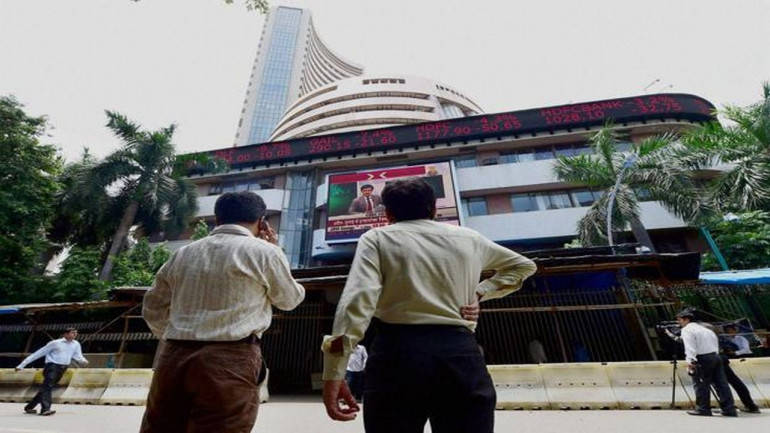The medium-term story on India has not changed despite a 10 percent kind of fall from highs and is reasonably intact. It is one of the fastest growing large economies in the world.
Despite an approximately 10 percent fall from the top, fund manager Lalit Nambiar, who manages about Rs 7,200 crore in assets, says India's medium-term story has not changed.
In an interview with Moneycontrol's Kshitij Anand, Nambiar, Executive Vice President and Fund Manager (Equity), UTI Mutual Fund, said India was still among the world's fastest-growing large economies.
Q: The Nifty has fallen by about 10% from its all-time high of 11,171. Do you think the pain is likely to continue on D-Street amid global and domestic headwinds?
A: Serious investors understand that drawdowns of 10 percent or thereabouts are par for the course. One must also consider the global backdrop.
We have a new US Fed Chairperson who seems a bit more hawkish than his predecessors, apart from that there is a rise in protectionist rhetoric led by the US and an upward bias to crude and commodities given the recovery in global growth.
When measured against all of this, there is a perception that India has shifted slightly from the macro sweet spot it had occupied for the last 18-24 odd months.
Of course, valuations had only been moving up in that time and the situation was always ripe for the market to take a breather in the near absence of earnings momentum.
That said, the medium-term story on India has not changed and is reasonably intact in that it is one of the fastest growing large economies in the world.
Q: Do you think protectionism measures initiated by the Trump government will impact Indian markets? If yes, which are the sectors that are likely to face the headwinds and why?
A: These measures seem to be more of a sound and light show, with more sound and little light. For instance, if we consider steel -- US accounts for about 3 percent of global exports of which a large part is from Canada and Mexico, which have been kept out of the ambit.
But, of course, a sentiment with respect to global trade will be dampened especially now that global trade growth is coming out of the dip seen in 2016.
Of course, trade disputes should not hurt global trade over the longer term as intermediaries usually respond by changing their sources of goods.
Q: FY18 belonged to the bulls but what is your outlook for FY19?
A: Difficult to give a 1-year view. Our sense is that over the next 5-7 years, Indian Equities should give a post-tax return of about 10-12 percent CAGR (A 12 percent annualised gain would double an investment in six years).
Q: Any particular sector(s) which is likely to hog the limelight in FY19?
A: FY19 looks like a year of the bottom-up stock picker what with the elections, volatility returning to markets and more noise at the global trade level. So will be difficult to pick a clear winner among sectors
Q: After this recent correction, do you think inflows into MFs which picked up the pace in 2017 could now see some redemptions?
A: Apart from structural shifts in terms of investing patterns, MF inflows were probably helped by the perceived momentum in equity markets, a softer interest rate climate as well as lack of choice in other asset classes, primarily gold and realty.
Therefore, even with valuations being quite sticky, there was a strong impetus to flows. Some of these factors have now taken a back seat especially as things are not looking as comfortable on the interest rate front or on the CAD front.
There could be some sector or fund cap specific re-allocations but unless there is any major event-based upheaval does not look like there will be large-scale redemptions.
Q: Do you think there could be more skeletons which could come out of the closet in the banking sector especially after the Nirav Modi-PNB saga? It looks like woes for the banking sector is here to stay and if it spreads towards private banking space, it could be disastrous. Do you agree?
A: The Indian economy escaped relatively unscathed post the global financial crisis (GFC). That said, globally linked businesses such as steel and even coal-based power went through a major upheaval as the core assumptions around some of the new projects in this space went a-begging, impacting our banks eventually leading up to bankruptcy procedures being taken up today.
Presumably, this background noise obfuscated from regulatory and management scrutiny, the relatively smaller exposures such as Gems & Jewelry and these businesses were round-tripping funds without adequate margin.
All of this seems to be coming to a head now with the NCLT process reasonably sorted out and likely tighter oversight on senior management appointments in PSU banks. In as far as private banks go, I think the ESOPs and longer tenures of top management reasonably ensure, that out and out fraud is within tolerable limits.
So, I suppose one can say that we are presently in the darkest hour before dawn kind of situation and things are probably close to getting better.
Q: Any top five sectors which are looking attractive?
A: From a top-down perspective, Rural and Industrial cyclical stories are looking interesting.
Q: FIIs seems to be bailing out from Indian markets, do you think the trend could continue at least for the year 2018?
A: I presume it will always be a relative valuation call for FIIs. Earnings and growth is looking better in other EMs and interest rate bias is favouring an EM to DM move as well.
Unless earnings recovery in India accelerates other spaces may be looking more attractive to them, but not enough to see a sharp FII selloff.